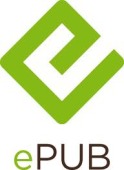You can find the first part of this series here
 When the New Year’s Day sun rose in Europe and the United States, the reality of what had happened was hidden to almost all. Only a hundred or so targets had been struck, and the smoke from the ruins that remained was already dissipating. What people did immediately realize was that certain things that they were used to working now did not.
When the New Year’s Day sun rose in Europe and the United States, the reality of what had happened was hidden to almost all. Only a hundred or so targets had been struck, and the smoke from the ruins that remained was already dissipating. What people did immediately realize was that certain things that they were used to working now did not.
The things that no longer functioned included anything that relied on electricity to operate. Which was, of course, virtually everything except automobiles. This was necessarily the case, because all of the elements that coordinated and controlled the power grid had been destroyed. Even many battery powered devices were silent – the cell phones had no dial tones, and the radios generated only static, because the management software and servers that enabled telecommunications had also been annihilated. Perhaps most discomfiting of all, there was no Internet, nor any of the services that relied upon the Internet.
You can read the first part of this series here
 As the sun set on New Year’s Eve, 2022, a dozen anonymous container ships were approaching major ports in the United States and Europe. Like many carriers nearing the end of their useful life, their histories were mongrel in nature; originally owned by major shipping magnates in Greece, they had passed through multiple hands and were now flagged in Senegal, and chartered by a concern in Amsterdam. Three years ago each had been subchartered by one of several much smaller companies with offices in many out of the way places.
As the sun set on New Year’s Eve, 2022, a dozen anonymous container ships were approaching major ports in the United States and Europe. Like many carriers nearing the end of their useful life, their histories were mongrel in nature; originally owned by major shipping magnates in Greece, they had passed through multiple hands and were now flagged in Senegal, and chartered by a concern in Amsterdam. Three years ago each had been subchartered by one of several much smaller companies with offices in many out of the way places.
The terms of each charter contract made the company responsible for the upkeep of the ships it had leased, and in due course over the first year of the engagements each ship had undergone repairs in small ship yards in the Indian Ocean and in Southeast Asia before returning to ply its trade in the various shipping lanes of the world.
This is the first part of a four-day series I will post this week highlighting an astonishingly neglected area of cyber-vulnerability. I will be presenting it tomorrow (remotely) at the Jules Verne Corner segment of the ITU's meetings this week in Kyoto, Japan
 There appears to be consensus in many quarters today that migrating to the Cloud is highly desirable – indeed, that we have already embarked upon an irresistible and indeed inexorable migration. Multinational IT vendors view this transition as the next great market opportunity; governments see in it an opportunity to finally rationalize their Byzantine legacy systems without incurring massive up front capital costs; and enterprise users find the value proposition increasingly compelling as their systems become more complex, expensive and difficult to maintain.
There appears to be consensus in many quarters today that migrating to the Cloud is highly desirable – indeed, that we have already embarked upon an irresistible and indeed inexorable migration. Multinational IT vendors view this transition as the next great market opportunity; governments see in it an opportunity to finally rationalize their Byzantine legacy systems without incurring massive up front capital costs; and enterprise users find the value proposition increasingly compelling as their systems become more complex, expensive and difficult to maintain.
Meanwhile, the data, records, pictures and social relations of individuals (often without their pausing to think about it) move with the tap of a key from hard drives and back up device from the supervision of their owners to who knows where, owned by who knows who, and vulnerable to who knows what?
Have you discovered The Alexandria Project?
 On Tuesday, OASIS made an extremely rare announcement for an information technology consortium: that it has successfully completed the process of becoming accredited by the American National Standards Institute (ANSI). As a result, it is now able to submit its standards to ANSI for recognition as American National Standards (ANS). And also to directly submit its standards for adoption by ISO and IEC. This is a milestone that’s worthy of note, despite the fact that over 200 standards setting organizations (SSOs) have achieved a similar status in the past.
On Tuesday, OASIS made an extremely rare announcement for an information technology consortium: that it has successfully completed the process of becoming accredited by the American National Standards Institute (ANSI). As a result, it is now able to submit its standards to ANSI for recognition as American National Standards (ANS). And also to directly submit its standards for adoption by ISO and IEC. This is a milestone that’s worthy of note, despite the fact that over 200 standards setting organizations (SSOs) have achieved a similar status in the past.
 From time to time over the past year I’ve noted that events in the real world involving North Korea have been closely tracking the plot of my book, The Alexandria Project. Among other events, North Korea has successfully launched a three stage rocket and threatened to use it to strike the U.S.; analysts have begun to speculate that the surprisingly low-yield nuclear weapons the North has tested may not be poor performing designs, but instead small devices purpose-built for missile launch against America. Just yesterday, the U.S. sent a pair of nuclear weapons-capable stealth bombers over South Korea, the same delivery means contemplated in my book.
From time to time over the past year I’ve noted that events in the real world involving North Korea have been closely tracking the plot of my book, The Alexandria Project. Among other events, North Korea has successfully launched a three stage rocket and threatened to use it to strike the U.S.; analysts have begun to speculate that the surprisingly low-yield nuclear weapons the North has tested may not be poor performing designs, but instead small devices purpose-built for missile launch against America. Just yesterday, the U.S. sent a pair of nuclear weapons-capable stealth bombers over South Korea, the same delivery means contemplated in my book.
Okay. Most of that could be attributed simply to the fact that I did my research well, and that others might make the same speculations based on past events that I did in developing my plot. But this morning’s news included a story that makes me seriously wonder whether my book has crossed the divide from predicting events to acting as a “how to” manual for real-world, state-supported cyber attackers.
North Korea threatened to launch a preemptive nuclear strike on its “aggressors,” including the U.S., ahead of a United Nations vote on tougher sanctions against the totalitarian state for last month’s atomic test. - Bloomberg News, March 7, 2013
 Excerpt from
The Alexandria Project Chapter 30: The Death Defying, Incredibly Exciting, Final Chapter!
Excerpt from
The Alexandria Project Chapter 30: The Death Defying, Incredibly Exciting, Final Chapter!
“Do not underestimate the military, my friend. You must leave this in my charge and trust that it will be as I have promised. As soon as the missiles are ready, they will be fired. Approximately twenty minutes later, Washington and another city that will surprise you will be destroyed. There will be utter chaos in the enemy’s ranks, and in that chaos, I will give the order for our troops to attack across the border. Seoul will be ours before nightfall.”
Our story so far: Our hero, Frank Adversego now understands where the name "Alexandria Project" comes from, but hasn't been able to figure out much else yet about the mysterious cracker whose exploit threatens the Library of Congress. Read the first chapters here.
 Frank fidgeted next to the cheese and crackers, looking helplessly for his daughter in the crowd. He hated social events with a passion, and especially having to speak to people he didn’t know. He was sure that every sentence he uttered came across as a brainless non-sequitur.
Frank fidgeted next to the cheese and crackers, looking helplessly for his daughter in the crowd. He hated social events with a passion, and especially having to speak to people he didn’t know. He was sure that every sentence he uttered came across as a brainless non-sequitur.
But fair was fair. Marla was finishing up an internship with a local high tech company, and at the last minute, her date had come down with the flu. She had kept him company at the Library of Congress holiday party the weekend before, and this time it was his turn.
“Please, Dad,” she’d said over the phone, “There’s this guy at work that’s been hitting on me all week. It’ll do you good to get out of your crummy apartment, and how can you turn down a request to protect your little girl?”
Have you discovered The Alexandria Project?
 Anyone who reads eBooks is aware that a number of content vendors are using proprietary platforms in an effort to lock you into their content libraries: most obviously, Amazon, with its Kindle line, Barnes & Noble with its Nook devices, and Apple with its iPads and iPhones. But there are many non-content vendors that would love to sell you an eReader as well, such as Kobo, and Pocketbook, not to mention the smartphone vendors that would be happy to have you use their devices as eReaders, too.
Anyone who reads eBooks is aware that a number of content vendors are using proprietary platforms in an effort to lock you into their content libraries: most obviously, Amazon, with its Kindle line, Barnes & Noble with its Nook devices, and Apple with its iPads and iPhones. But there are many non-content vendors that would love to sell you an eReader as well, such as Kobo, and Pocketbook, not to mention the smartphone vendors that would be happy to have you use their devices as eReaders, too.
But can you? Well, as you’re probably also aware, that depends. For example, in addition to selling content that will play only on their devices, Amazon and Apple also produce versions of their content that can be viewed on the readers of their competitors as well.
All of this not only makes it confusing and limiting for eBook buyers, but also for content publishers large (like Random House) and small (like technical title boutique publisher O’Reilly), that have seen their traditional distribution models not only upended by the eBook revolution, but complicated by the proprietary antics of the Amazons of the world.
It also appeared that whoever was behind the exploit knew exactly what he was looking for, and had figured out where to find it. That suggested the cracker had managed to acquire some degree of inside knowledge, or at least …
Have you discovered The Alexandria Project?
 It was in September of 2010 that a group of key members of the OpenOffice.org developer team announced that they were no longer willing to wait out the uncertain future of OpenOffice, especially in the face of the lack of interest shown by Oracle, the new owner of the project following its acquisition of Sun Microsystems nine months before.
It was in September of 2010 that a group of key members of the OpenOffice.org developer team announced that they were no longer willing to wait out the uncertain future of OpenOffice, especially in the face of the lack of interest shown by Oracle, the new owner of the project following its acquisition of Sun Microsystems nine months before.
Their announced intent was to form an independent foundation to host a fork of the OpenOffice code base, thereby achieving a goal they had sought throughout ten years of control by Sun – to work in an environment free from the control of a single vendor.
It's now two and a half years later, and with the release of LibreOffice 4.0, that Foundation is not only flourishing, but forging a path independent of its predecessor.
 When the New Year’s Day sun rose in Europe and the United States, the reality of what had happened was hidden to almost all. Only a hundred or so targets had been struck, and the smoke from the ruins that remained was already dissipating. What people did immediately realize was that certain things that they were used to working now did not.
When the New Year’s Day sun rose in Europe and the United States, the reality of what had happened was hidden to almost all. Only a hundred or so targets had been struck, and the smoke from the ruins that remained was already dissipating. What people did immediately realize was that certain things that they were used to working now did not. As the sun set on New Year’s Eve, 2022, a dozen anonymous container ships were approaching major ports in the United States and Europe. Like many carriers nearing the end of their useful life, their histories were mongrel in nature; originally owned by major shipping magnates in Greece, they had passed through multiple hands and were now flagged in Senegal, and chartered by a concern in Amsterdam. Three years ago each had been subchartered by one of several much smaller companies with offices in many out of the way places.
As the sun set on New Year’s Eve, 2022, a dozen anonymous container ships were approaching major ports in the United States and Europe. Like many carriers nearing the end of their useful life, their histories were mongrel in nature; originally owned by major shipping magnates in Greece, they had passed through multiple hands and were now flagged in Senegal, and chartered by a concern in Amsterdam. Three years ago each had been subchartered by one of several much smaller companies with offices in many out of the way places.  There appears to be consensus in many quarters today that migrating to the Cloud is highly desirable – indeed, that we have already embarked upon an irresistible and indeed inexorable migration. Multinational IT vendors view this transition as the next great market opportunity; governments see in it an opportunity to finally rationalize their Byzantine legacy systems without incurring massive up front capital costs; and enterprise users find the value proposition increasingly compelling as their systems become more complex, expensive and difficult to maintain.
There appears to be consensus in many quarters today that migrating to the Cloud is highly desirable – indeed, that we have already embarked upon an irresistible and indeed inexorable migration. Multinational IT vendors view this transition as the next great market opportunity; governments see in it an opportunity to finally rationalize their Byzantine legacy systems without incurring massive up front capital costs; and enterprise users find the value proposition increasingly compelling as their systems become more complex, expensive and difficult to maintain.  From
From  Excerpt from
The Alexandria Project Chapter 30: The Death Defying, Incredibly Exciting, Final Chapter!
Excerpt from
The Alexandria Project Chapter 30: The Death Defying, Incredibly Exciting, Final Chapter! Frank fidgeted next to the cheese and crackers, looking helplessly for his daughter in the crowd. He hated social events with a passion, and especially having to speak to people he didn’t know. He was sure that every sentence he uttered came across as a brainless non-sequitur.
Frank fidgeted next to the cheese and crackers, looking helplessly for his daughter in the crowd. He hated social events with a passion, and especially having to speak to people he didn’t know. He was sure that every sentence he uttered came across as a brainless non-sequitur.  Anyone who reads eBooks is aware that a number of content vendors are using proprietary platforms in an effort to lock you into their content libraries: most obviously, Amazon, with its Kindle line, Barnes & Noble with its Nook devices, and Apple with its iPads and iPhones. But there are many non-content vendors that would love to sell you an eReader as well, such as Kobo, and Pocketbook, not to mention the smartphone vendors that would be happy to have you use their devices as eReaders, too.
Anyone who reads eBooks is aware that a number of content vendors are using proprietary platforms in an effort to lock you into their content libraries: most obviously, Amazon, with its Kindle line, Barnes & Noble with its Nook devices, and Apple with its iPads and iPhones. But there are many non-content vendors that would love to sell you an eReader as well, such as Kobo, and Pocketbook, not to mention the smartphone vendors that would be happy to have you use their devices as eReaders, too.